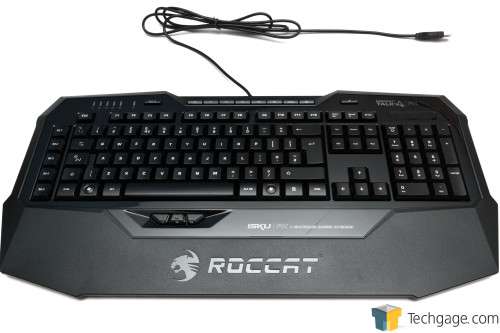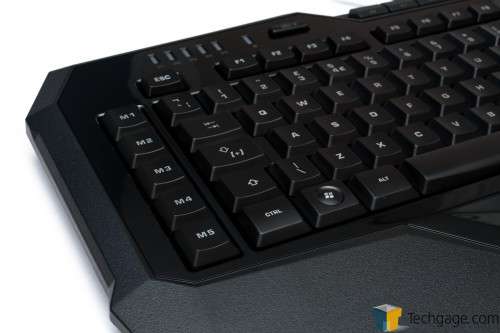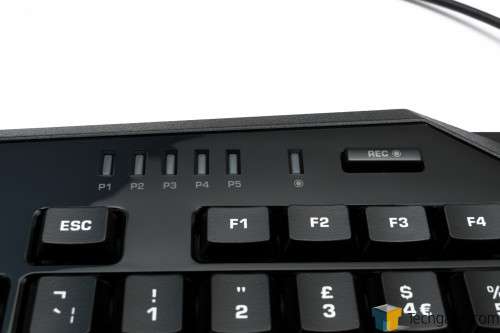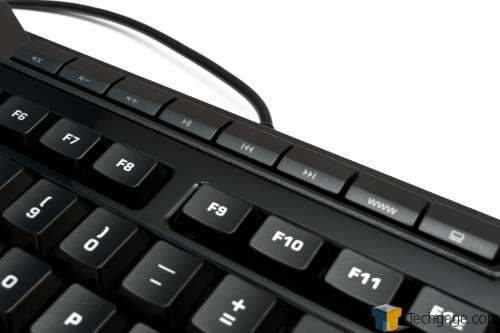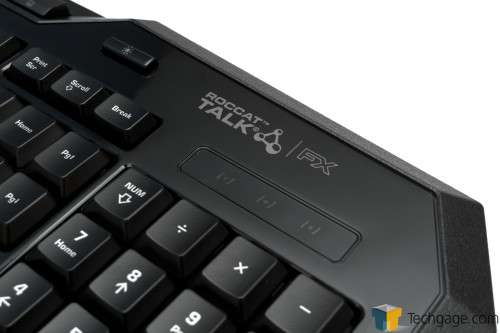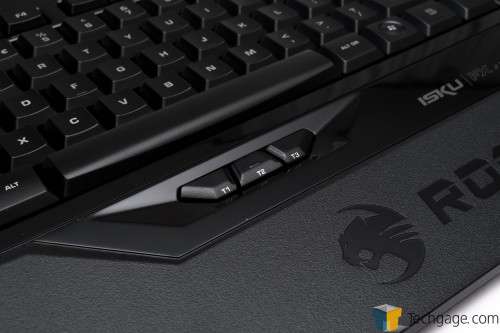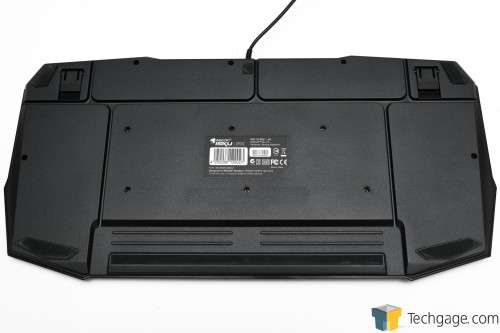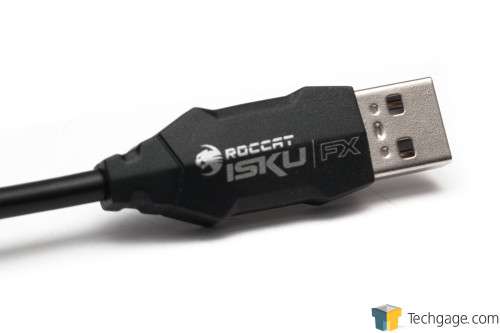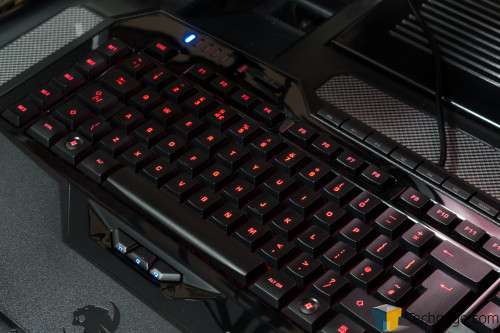- Qualcomm Launches Snapdragon 4 Gen 2 Mobile Platform
- AMD Launches Ryzen PRO 7000 Series Mobile & Desktop Platform
- Intel Launches Sleek Single-Slot Arc Pro A60 Workstation Graphics Card
- NVIDIA Announces Latest Ada Lovelace Additions: GeForce RTX 4060 Ti & RTX 4060
- Maxon Redshift With AMD Radeon GPU Rendering Support Now Available
ROCCAT Isku FX – The FX Stands for ‘Features in eXcess’

At the time of writing, the Isku FX is ROCCAT’s range-topping keyboard. Appropriately it’s packed to the gills with features and capabilities lesser keyboards tend to eschew. No, it’s not a mechanical keyboard, but despite this is it still worth your hard-earned dollars? Read on and find out!
Page 1 – Introduction
Today I’m playing with something that’s a little bit out of the ordinary.
You see, your humble Techgage scribe here has been using mechanical keyboards almost exclusively for the last few years now. Only when I’m at my day job or when I’m on my laptop do I not use a mech. However, I promise you that I won’t let my preference for mechs color my review.
The ROCCAT Isku FX is a membrane keyboard with dome-type switches. It is currently the company’s top-of-the-line gaming keyboard. Soon, that title will shift on over to the company’s first mechanical, Ryos.
As you can see, the Isku FX quite stylish. Especially noteworthy are its trapezoidal outline, its chiseled surfaces, and the glossy black finish on the chassis. The embossed ROCCAT logos in the middle of the integrated wrist rest also catch the eye, as does the satin finish on the keys and the textured matte finish of the aforementioned wrist rest. And speaking of the keys, it has 123 of them, including its dedicated macro keys and other special function buttons. It’s very easy to see, then, that this is no ordinary plank.
With that overview done, let’s have a more detailed look at the distinguishing features of the Isku FX.
We’ll start our visual tour on its left side. What immediately stands out here is the column of five macro keys, labeled sequentially M1 through M5. Easier to miss is a curiously labeled key where CAPS LOCK is usually positioned. This is what ROCCAT calls its “Easy-Shift[+]” key. We’ll have a closer look at what the Easy-Shift[+] key does a little later in the review.
Now, going clockwise on our visual tour, we take a look at the Isku FX’s top left edge. There is a row of six rectangular LEDs on the top left. Five are grouped together labeled P1 through P5; these designate which user profile is currently active. The LED by its lonesome is the indicator light for the Macro Live! record button, which sits just to the right of its indicator light. As its name suggests, pressing this button enables the end user to create macro commands even on the fly.
Dead center at the top edge of the keyboard is where the eight multi-media and shortcut hotkeys reside. Going from left to right, you have: Mute/Unmute; Volume Down; Volume Up; Play/Pause; Skip/Fast Forward; Skip Backward/Rewind; Web Browser; and Windows Explorer. All of these can be re-purposed via the software suite.
The top right edge of the keyboard is not nearly as busy as the other parts of the Isku FX. Directly to the right of the central hotkey area is the backlight control key. You can set your Isku’s backlighting to any one of six brightness levels by pushing this key. And to the right of this key is an interesting bit of branding: ROCCAT Talk. We’ll have a look at what this piece of branding is all about later on in the review as well.
There’s nothing unconventional on the right edge, so we’ll continue with our visual tour with a look at the bottom edge of the keyboard. The textured expanse of the wrist rest dominates things here, but the ROCCAT logo is an interesting visual counterpoint. So overpowering are these two features that it might be easy to miss the three Thumbster buttons set inside a recess under the space bar. What are these Thumbster keys for? We’ll check them out in greater detail soon enough.
The bottom side of the keyboard is fairly uninteresting. There are four well-placed rubber feet which do a good job of ensuring the Isku FX stays planted on your desk. The top pair of feet flip down to raise the keyboard in case you’re more used to a higher-angled typing position. There are also grooves on the bottom surface; I’ve seen various other reviews describe these as being for cable management, but I’m a bit perplexed by that idea to be honest. The Isku FX’s USB cable, after all, comes out at the rear of the body (in other words, not from under the body). So, whether or not these grooves are functional or ornamental, I cannot say definitively.
Speaking of cables, the Isku FX has a single non-braided USB cable. I quite like the connector, as it is labeled very clearly. Labeling the connector like this is a very clever and elegant solution, one that I would someday want to be an industry standard. Times without number I’ve accidentally pulled out the wrong USB device from the rear I/O panel. Silk-screening a label onto the connector is a very intelligent convenience item, one for which I give ROCCAT a truckload of extra points.
If you were wondering about the backlight, here it is in action. The backlight is not the strongest I have seen, but there is a wide selection of colors, pulsing and so forth.
Now that we’ve had a good look at the hardware, let’s turn our eyes onto the software package and explore all that this keyboard can do.
Support our efforts! With ad revenue at an all-time low for written websites, we're relying more than ever on reader support to help us continue putting so much effort into this type of content. You can support us by becoming a Patron, or by using our Amazon shopping affiliate links listed through our articles. Thanks for your support!




